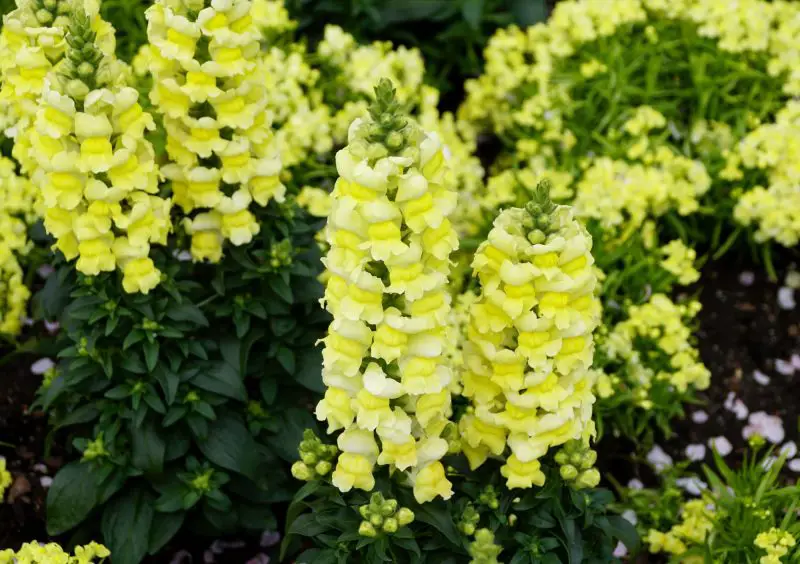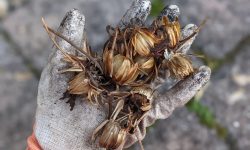Snapdragons bring vibrant colors and unique shapes to gardens, attracting gardeners with their charm. They brighten flower beds, borders, and containers, adding vertical interest and playful texture. Knowing when snapdragons bloom helps gardeners plan planting schedules, maintain continuous color, and enjoy their flowers at peak beauty. Timing also supports proper care, prevents plant stress, and encourages fuller growth.
Different snapdragon varieties bloom at varying times, influenced by climate, season, and growing conditions. Early spring, summer, and even fall can offer opportunities for blooms, depending on variety. Understanding peak flowering seasons allows gardeners to coordinate companion plants, schedule fertilization, and manage watering efficiently. Careful planning ensures a long-lasting, colorful display. This guide explores bloom timing, factors that influence flowering, and practical tips to enjoy snapdragons at their fullest. By following these insights, gardeners can achieve vibrant and healthy plants throughout the growing season.
Understanding Snapdragon Bloom Cycles

Snapdragons show a fascinating bloom cycle that gardeners can use to plan continuous color in gardens. Most varieties produce flowers on upright spikes, with blossoms opening from the bottom upward. Early blooms appear first on mature stems, followed by secondary flowers as the season progresses. Gardeners who observe this pattern can schedule watering, fertilization, and deadheading to maintain peak health. Recognizing when each spike reaches its fullest bloom also helps plan companion planting, creating layered and visually appealing arrangements in beds and containers.
Environmental factors strongly influence the bloom cycle and duration. Cooler temperatures often slow flowering, extending display periods, while excessive heat accelerates fading and reduces bloom size. Adequate sunlight, well-draining soil, and consistent moisture support strong stems and vibrant flowers. Nutrient-rich soil enhances bloom size, color intensity, and flower longevity. Gardeners can extend flowering by planting snapdragons in partial shade during hot periods, or using mulch to retain moisture. These strategies help blooms last longer and keep the garden colorful across multiple months.
Proactive maintenance further enhances the bloom cycle and encourages more prolific flowering. Deadheading spent flowers stimulates secondary blooms and prevents the plant from directing energy into seed formation. Pinching young stems early promotes bushier growth and additional flower spikes. Removing weak, damaged, or diseased stems improves air circulation and reduces fungal or pest problems. Monitoring plants for signs of stress and trimming affected areas ensures healthy, resilient growth. By combining timing, environmental control, and consistent care, gardeners enjoy prolonged flowering, denser blooms, and eye-catching displays that sustain beauty throughout the growing season.
Factors That Influence Snapdragon Blooming
Temperature and Climate Conditions
Temperature strongly affects how snapdragons grow and bloom. These flowers prefer cool weather, ideally between 60°F and 75°F during the day and slightly cooler nights. When conditions stay mild, the plants use their energy to form buds and maintain vibrant color. But when heat rises above 85°F, flowering slows down. Petals fade quickly, stems lose firmness, and growth becomes weak. This is why gardeners in warm regions usually plant early in spring before the heat arrives.
In areas where summers are long and hot, snapdragons often perform best in fall or even early winter. Cool air and shorter days stimulate new bud formation. Some hardy varieties can handle light frost and bloom again once temperatures moderate. Regular watering and mulching also protect the roots from temperature swings. Understanding how local climate influences flowering helps gardeners adjust planting schedules, ensuring longer, healthier blooms. By following seasonal temperature patterns, one can enjoy multiple bloom cycles and a more colorful garden year after year.
Sunlight and Exposure
Sunlight provides the energy snapdragons need to create large, colorful blooms. They require at least six hours of direct sunlight daily to thrive. Full morning sun encourages strong stems, while afternoon shade helps prevent wilting in hot climates. Without enough light, snapdragons become leggy, produce fewer flowers, and lose their vivid color. Consistent sun exposure ensures balanced growth and encourages buds to open evenly.
Airflow around plants is equally important. Good circulation keeps leaves dry and reduces the risk of mildew. Planting snapdragons with enough space between each one helps air move freely and light reach all parts of the plant. Raised beds or open garden spots are ideal for this. When sunlight, airflow, and temperature align, snapdragons bloom with striking colors and firm, upright stems. Proper exposure guarantees that flowers last longer and continue to refresh your garden with vibrant beauty throughout the season.
Soil Quality and Watering
Healthy soil ensures consistent bloom production. Snapdragons thrive in nutrient-rich, well-draining soil with a slightly acidic to neutral pH. Mixing compost or decomposed manure before planting adds nutrients and improves aeration. Poor drainage suffocates roots, leading to weak growth and fewer flowers. Sandy soil can dry out too quickly, while heavy clay traps excess water. The ideal soil structure holds moisture without becoming soggy.
Watering practices also play a major role. Snapdragons like moisture but dislike standing water. Deep watering once or twice a week helps roots grow deeper and stronger. During warm weather, a layer of mulch keeps soil cool and retains water efficiently. Always water at the base to avoid wetting leaves, which may invite fungal diseases. Regular feeding with balanced fertilizer further boosts blooming potential. With proper soil care and controlled watering, snapdragons reward gardeners with rich colors, firm stems, and continuous flowering throughout their growing season.
Regional Blooming Times for Snapdragons
Northern Regions
In northern regions, snapdragons bloom mainly from late spring through early summer. Cool temperatures, longer daylight, and moderate rainfall create perfect growing conditions. Gardeners here start seeds indoors six to eight weeks before the last frost to make the most of the short season. Once the soil warms slightly, young plants can be transplanted outdoors in sunny spots. Early preparation is key to ensuring full bloom before heat sets in.
Flowering peaks around June and can last into July or early August if temperatures stay below 80°F. When heat increases, flowers may fade, but plants can revive with cooler fall air. Mulching around the base helps maintain soil moisture and keeps roots cool. Regular deadheading encourages new blooms and prevents seed formation, allowing longer flowering. In northern gardens, snapdragons add vibrant color when few annuals can. Their cold tolerance, bright spikes, and reliable reblooming make them perfect for short growing seasons.
Southern Regions
In southern regions, snapdragons grow best during cooler months, offering vivid color from fall through early spring. Because summers bring intense heat, gardeners treat them as cool-season annuals. Seeds started in late summer become strong transplants ready for autumn planting. Once temperatures drop below 80°F, the plants grow fast, producing tall flower spikes in a variety of bright shades.
Blooming begins in October and often continues through April. Mild winters let snapdragons flower nonstop, especially with regular watering and feeding. As heat returns in late spring, flowers fade and growth slows. Gardeners often trim back plants to encourage another short bloom period in fall. Light afternoon shade and morning watering help maintain healthy plants even in warm spells. With thoughtful care, snapdragons become one of the most rewarding flowers in southern gardens, filling beds and borders with rich color while most plants rest for winter.
Coastal Regions
Coastal regions provide mild weather and gentle humidity, creating ideal growing conditions for snapdragons almost year-round. Cool breezes and steady sunlight allow two main blooming seasons — spring and fall — though some varieties can flower continuously with proper care. Gardeners often sow seeds in early spring and again in late summer to keep flowers blooming across the seasons.
Blooms typically last from March through November, depending on temperature and rainfall. Coastal humidity promotes lush growth, but spacing between plants ensures good airflow and prevents fungal disease. Regular feeding and consistent watering support strong stems and colorful petals. A thin layer of mulch helps regulate moisture levels and protect roots from salty winds. Even under cloudy skies, snapdragons maintain their brightness and charm. In coastal gardens, they provide steady color with little effort, making them a favorite for both novice and experienced growers who want lasting seaside beauty.
Mountain and High-Altitude Areas
In mountain and high-altitude regions, snapdragons flourish during the short but vibrant summer. The cool days, bright sunlight, and crisp nights help them produce intense colors and long-lasting blooms. Gardeners usually start seeds indoors in early spring and transplant them outdoors after the last frost, around late May or early June. These hardy plants adapt well to rocky, well-drained soil and cool winds.
Blooming begins in June and can continue into September if conditions remain stable. Because weather changes quickly at high elevations, protection is essential. A layer of mulch helps keep soil warm and retain moisture during dry periods. Windbreaks or sheltered planting spots reduce stem damage. Frequent watering encourages steady growth and reblooming. When cared for properly, snapdragons in mountain regions reward gardeners with thick, upright flower spikes that stay colorful even after chilly nights. Their resilience makes them a beloved symbol of endurance and beauty in challenging climates.
How to Extend the Snapdragon Blooming Season
Extending the blooming season of snapdragons requires a thoughtful balance of care, timing, and environmental management. These charming cool-season flowers flourish best in mild weather, making temperature control key to long-lasting color. To start, consistent deadheading—removing faded blooms before they produce seeds—is essential. This encourages continuous bud formation and prevents the plant from entering a resting phase. Maintaining even soil moisture, without letting it dry out or become waterlogged, also helps prolong the bloom period. Snapdragons prefer slightly cool, moist conditions, so in hot climates, it’s best to plant them where they receive morning sun and afternoon shade to protect them from intense heat.
Proper nutrition plays a major role in sustaining flowering. Feed the plants every two to three weeks with a balanced, water-soluble fertilizer that’s not too high in nitrogen. Too much nitrogen encourages leafy growth instead of blossoms, so look for a formula that supports blooming, such as one with a higher phosphorus ratio. Adding organic compost or mulch helps regulate soil temperature, retains moisture, and keeps roots cool during warmer months. Regular soil enrichment keeps plants vigorous, leading to stronger stems and a longer blooming cycle.
After the first wave of blooms fades, pruning back the plants by about one-third encourages fresh shoots and a second round of flowers later in the season. In regions with mild winters, snapdragons can sometimes overwinter and bloom again the following spring. Removing dead foliage and controlling pests such as aphids or spider mites also prevents stress that could shorten the flowering period. With attentive maintenance, balanced feeding, and protection from harsh conditions, your snapdragons can remain vibrant and colorful for months, extending their charm well beyond the typical season.
Common Reasons Snapdragons Stop Blooming
Lack of Sunlight
Snapdragons are naturally sun-loving plants that thrive in bright, open spaces. They need at least six hours of full sunlight every day to produce strong stems and abundant flowers. Without sufficient light, the plants quickly become leggy and pale, stretching upward in search of the sun. This process redirects energy away from flower development, resulting in fewer blooms and smaller petals. Gardeners often mistake this for a nutrient problem when the real issue is light deprivation. Shaded gardens, cloudy climates, or crowded plantings can all contribute to weak, underperforming snapdragons.
To correct this, always choose a sunny location for planting or move potted snapdragons to a brighter area. Morning sun is ideal because it encourages steady growth while protecting the plants from harsh afternoon heat. If natural light is limited, consider trimming nearby shrubs or using reflective surfaces to increase exposure. Consistent, direct sunlight strengthens the plant’s internal systems, improving flower formation, leaf color, and fragrance. Once they receive the right amount of light, snapdragons will quickly return to their full, vibrant bloom cycle.
Overwatering or Poor Drainage
Too much water is one of the most common mistakes gardeners make with snapdragons. These plants enjoy evenly moist soil, but constant wetness suffocates their roots and encourages fungal diseases. When oxygen cannot circulate properly in the root zone, the plant weakens, leaves yellow, and flowers fail to appear. Poor drainage, especially in clay-heavy soils or sealed containers, worsens the situation and leads to root rot. Snapdragons grown in waterlogged soil often wilt despite frequent watering, leaving gardeners confused about the cause.
To prevent this, water deeply but less often, allowing the top inch of soil to dry before watering again. Mix compost or coarse sand into the soil to improve drainage and aeration. When growing in containers, always ensure they have holes for excess water to escape. Mulching lightly can help maintain moisture without creating soggy conditions. Proper water balance not only prevents disease but also encourages stronger, more consistent blooms. Healthy, well-drained roots lead to lush snapdragons that flower throughout the growing season.
Nutrient Imbalance
Fertilizing snapdragons correctly is essential for consistent blooms. Too much nitrogen is one of the main reasons these plants stop flowering. Nitrogen promotes leaf growth at the expense of buds, leading to lush, green foliage but very few blossoms. This imbalance often occurs when gardeners use lawn fertilizers or all-purpose blends high in nitrogen. On the other hand, a lack of phosphorus and potassium weakens flower production and stem strength, making blooms sparse and short-lived.
To restore the right balance, use a bloom-boosting fertilizer with a formula such as 5-10-10 or 10-20-20. These ratios encourage healthy roots and abundant flowering. Apply fertilizer every four to six weeks during the active growing season, and always water afterward to help nutrients absorb properly. Avoid overfeeding, as excessive salts can build up and damage roots. Balanced nutrition creates a strong foundation for growth, helping snapdragons produce colorful, long-lasting flowers that continue from spring to early fall.
Heat Stress
Snapdragons are cool-season flowers that prefer temperatures between 55°F and 75°F (13°C–24°C). When exposed to prolonged heat above 85°F (29°C), they often stop blooming and enter a resting phase. This reaction helps the plant conserve moisture and energy during stressful conditions. The leaves may droop, and flowers fade quickly or fail to form. In hot, dry climates, snapdragons can appear weak even with regular watering. However, with proper care, they can survive the heat and return to full bloom once temperatures drop.
To protect snapdragons during warm weather, provide partial shade during the hottest parts of the day. Planting them near taller flowers or using shade cloth helps reduce heat stress. Adding mulch around the base keeps soil cool and retains moisture. Water deeply in the early morning to help the roots stay hydrated before the midday sun. If blooms fade, trim spent flowers to encourage new buds when cooler weather returns. With patience and consistent care, your snapdragons will rebound beautifully in the next bloom cycle.
How to Encourage Re-Blooming Snapdragons
Getting snapdragons to bloom again after their first flush is entirely possible with proper pruning, nutrition, and attentive care. Once the first blooms fade, resist pulling the plants out. Instead, trim spent flower spikes down to just above a healthy leaf set. This redirection of energy allows the plant to focus on new growth instead of seed production. Within two to three weeks, new shoots typically emerge from the leaf nodes, a clear sign that the plant is regenerating and preparing for another round of vibrant blooms. Removing dead or damaged stems at this stage also helps improve airflow and reduces the risk of disease.
Fertilizing after pruning gives the plant a vital boost. Use a balanced, water-soluble fertilizer with a higher phosphorus ratio to stimulate bud formation. Avoid overusing nitrogen-based fertilizers, which encourage leafy growth but delay flowering. Water your snapdragons regularly, keeping the soil evenly moist but never soggy. Mulching helps regulate soil temperature and retain moisture, creating an ideal environment for continuous bloom development. In regions with intense summer heat, move potted snapdragons to partial shade to prevent stress and wilting.
Temperature and ongoing maintenance greatly influence re-blooming success. Snapdragons perform best when temperatures range between 55°F and 75°F. As the heat of midsummer fades, the plants respond quickly to cooler air and renewed feeding. Continue deadheading and pruning lightly to maintain compact growth and stimulate new flowering stems. By combining consistent moisture, balanced feeding, and smart pruning, gardeners can enjoy wave after wave of colorful snapdragon blossoms that brighten the garden well into the fall season. With attentive care, these charming flowers can deliver an extended, breathtaking bloom cycle.
Ideal Growing Conditions to Support Continuous Bloom
To enjoy snapdragons that bloom abundantly throughout the season, creating the right growing environment is key. These flowers flourish in well-draining, nutrient-rich soil with a slightly acidic to neutral pH between 6.2 and 7.0. Before planting, it’s helpful to mix compost or aged manure into the soil to enhance texture and fertility. This organic matter not only improves nutrient availability but also helps retain consistent moisture, which snapdragons need to sustain long-lasting blooms. Plant them in a location that receives at least six hours of direct sunlight each day to encourage sturdy stems and vivid flower colors.
Temperature plays a crucial role in maintaining healthy snapdragons. They perform best in cool to mild conditions, with daytime temperatures between 60°F and 75°F. In areas where summers are hot, gardeners can extend the blooming season by planting snapdragons in early spring or fall. Providing afternoon shade and maintaining good air circulation prevent stress and fungal problems. Mulching around the base also helps moderate soil temperature and protect roots from sudden changes in heat or cold, creating an ideal environment for continuous growth.
Consistent care is just as important as initial planting conditions. Water deeply but infrequently, allowing the top layer of soil to dry slightly before the next watering. This encourages strong root systems that support steady flower production. Regular feeding with a phosphorus-rich fertilizer every few weeks boosts bud formation. Pruning spent flowers keeps the plant tidy and redirects energy toward new blooms. With well-prepared soil, proper watering, and balanced nutrition, snapdragons will reward you with continuous, dazzling color from early spring until the first frost.
How Weather Affects Snapdragon Blooming Times
Weather plays one of the most important roles in determining when and how long snapdragons bloom. These plants are naturally adapted to cool conditions and show their best color when daytime temperatures range from 60°F to 75°F. In mild weather, the buds open steadily, and the flowers last for weeks. However, when the temperature rises above 85°F (29°C), the plants slow their growth, and the blooms begin to fade more quickly. Extended periods of extreme heat may even cause the plants to enter dormancy, pausing their blooming cycle until cooler weather returns.
Cool nights also have a strong influence on flower longevity. Snapdragons perform best in regions where nighttime temperatures drop below 60°F (15°C). The cooler air allows the plants to rest and regenerate energy for the next day’s flower production. In hot or humid climates, providing afternoon shade and mulching around the roots helps protect the plant from stress and maintains consistent soil moisture. These small adjustments can make a significant difference in extending the flowering season.
Rain and humidity are additional factors to watch closely. While snapdragons enjoy evenly moist soil, too much rainfall or poor drainage can cause root rot and reduce blooming potential. Conversely, prolonged drought stress leads to smaller flowers and stunted growth. A balanced watering routine—keeping soil damp but never waterlogged—is essential. By monitoring weather patterns and adapting care accordingly, gardeners can help snapdragons thrive through shifting conditions. Whether facing spring chills or late-summer heat, understanding how climate affects blooming ensures that your snapdragons remain healthy, colorful, and full of life throughout their growing season.






